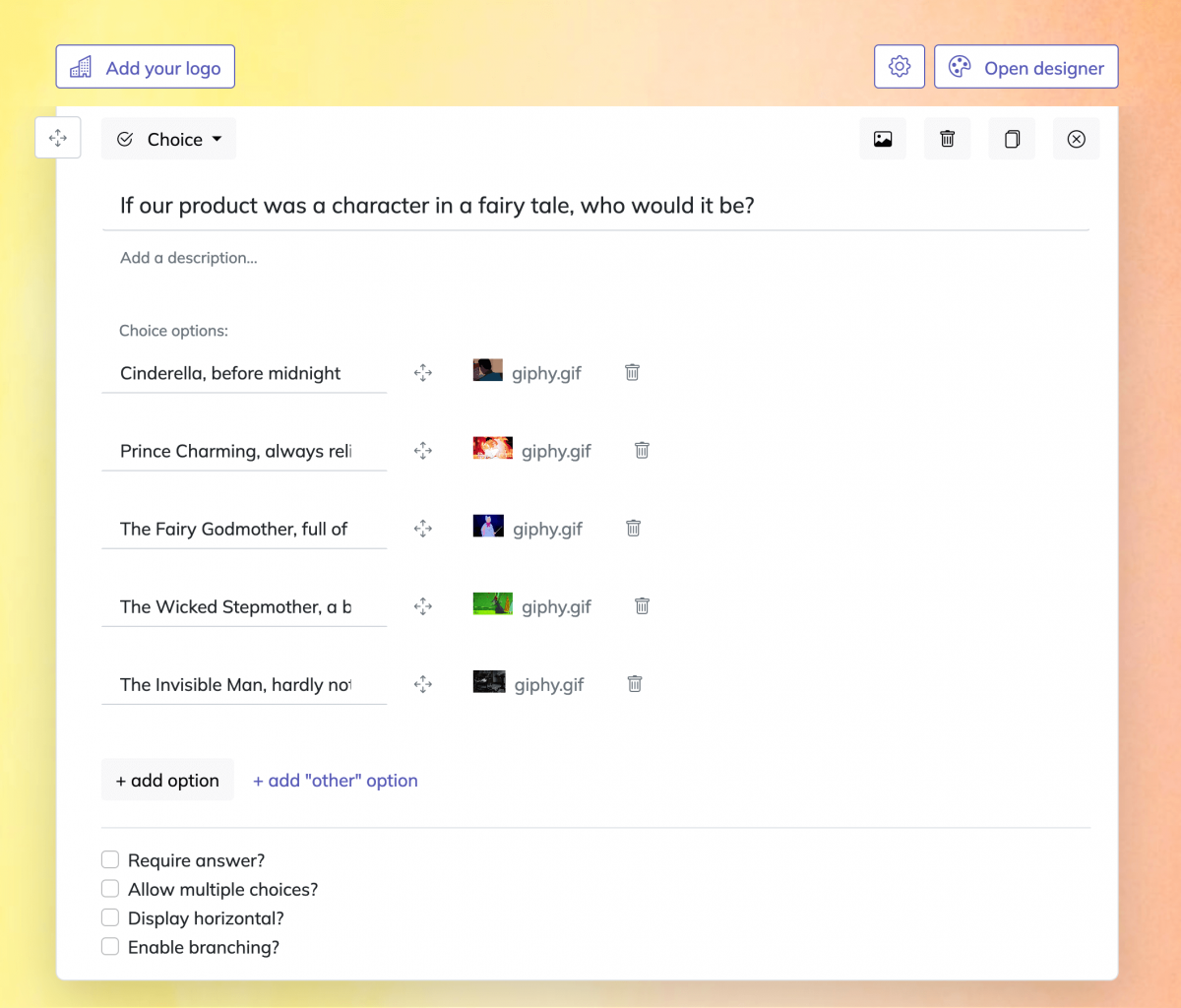Table of Contents
Image choice surveys have emerged as a popular method of gathering information and opinions from respondents. These surveys offer a unique approach by presenting participants with a set of images to choose from, rather than relying solely on text-based questions.
Image choice questions add a new dimension to survey responses, allowing for a more engaging and interactive experience. The increasing popularity of image choice surveys can be attributed to their ability to capture attention and provide a more intuitive way of expressing preferences.
Tips for Creating Effective Image Choice Surveys
- Ensure Clarity in Choices: When designing image choice surveys, it's crucial to ensure that the options provided are clear and distinct. This means that each choice should be different enough from the others so that it stands alone as a unique option. This makes it easier for respondents to make a selection and provides more accurate data for your analysis.
- Limit the Number of Options: While it's important to provide a variety of choices, offering too many can overwhelm your audience, leading to confusion or decision fatigue. A best practice is to limit the number of options to about 4-6. This strikes a balance between providing diversity and maintaining simplicity.
- Utilize High-Quality Images: The images you use in your survey must be of high quality. Poor or grainy images may affect the respondents' perception and could inadvertently influence their choice. High-resolution images can make your survey more appealing and result in more accurate feedback.
To streamline the process of creating effective image choice surveys, consider using a tool like HeySurvey. HeySurvey is a survey builder that supports image choice questions and offers a user-friendly interface for designing your surveys. The best part? It's completely free and supports unlimited responses.

Image Choice Surveys are More Effective
Power images evoke emotions, influence perception
The psychological impact of images is significant, as they have the power to evoke emotions and influence our perception. Visual processing plays a crucial role in how our brain interprets and understands information. Images have the ability to capture our attention and facilitate memory recall. When we see an image, it can trigger associations and connections that may not be as easily achieved through text alone. This is why images are often used in marketing and advertising to create a lasting impression on the viewer.
Images simplify complex information
In addition to their impact on memory recall, images can convey complex ideas more simply and quickly than text. Visual representations have the advantage of being able to simplify intricate concepts into easily digestible forms. By using images, complex information can be presented in a visually appealing and accessible manner. This is particularly beneficial in fields such as education, where visual aids can enhance understanding and retention of information.
Images enhance survey engagement and response rates
Furthermore, image choices can greatly impact respondent engagement and enjoyment, leading to higher response rates. When presented with a survey or questionnaire, respondents are more likely to find the experience engaging and enjoyable if images are incorporated. Images can add visual interest and variety, making the overall survey experience more appealing. This increased engagement can result in higher response rates, as respondents are more motivated to participate and complete the survey.
Case Studies
Fashion retailer
Image choice surveys have demonstrated their effectiveness in various real-world examples. One notable case is an online fashion retailer that conducted image choice surveys to determine the most appealing product images for their website. By presenting different options to their target audience and collecting feedback through surveys, they were able to identify the images that resonated the most with their customers. As a result, they optimized their website by showcasing the most preferred product images, leading to increased engagement and conversion rates.
Marketing agency
Another organization that benefited from image choice surveys is a marketing agency. They used these surveys to test different visual elements in their advertisements, such as color schemes, layouts, and imagery. By gathering data on audience preferences and perceptions through image choice surveys, they gained valuable insights into the most effective visual components for their target market. This enabled them to create more impactful and persuasive advertisements that resonated with their audience, resulting in improved campaign performance and higher ROI.
In both cases, image choice surveys provided these organizations with valuable feedback and insights into the preferences of their target audience. By leveraging this information, they were able to make data-driven decisions, optimize their content, and ultimately achieve better results in terms of customer engagement, conversions, and campaign performance.
VI. Potential Drawbacks and Limitations of Image Choice Surveys
Potential downsides or challenges in using image choice surveys include:
- limited response options
- potential bias in image selection
- participant fatigue
- limited ability to capture nuanced responses
- and potential technical issue
To address these challenges, there are several solutions and workarounds.
First, providing a diverse set of response options can help mitigate the issue of limited choices.
Second, implementing randomization in the image selection process can reduce bias and ensure fairness.
Third, breaking down the survey into smaller sections or providing breaks can help prevent participant fatigue.
Fourth, including open-ended questions alongside image choices can allow participants to provide more nuanced responses.
Finally, conducting thorough testing and ensuring a user-friendly interface can help prevent technical issues and ensure a smooth survey experience.
Conclusion
In conclusion, image choice surveys can be a potent tool for gathering insightful and clear-cut feedback. However, their effective use depends on addressing potential drawbacks and adopting efficient strategies for design, implementation, and data analysis.
As we wrap up our journey through the world of image choice surveys, remember that the key to success lies in the application of effective strategies and the use of robust tools. Enter HeySurvey, your trusty sidekick in this endeavor. With its intuitive design, diverse question options, and the assurance of flawless functionality, it transforms survey creation from a chore into an absolute breeze. And it's entirely free!

